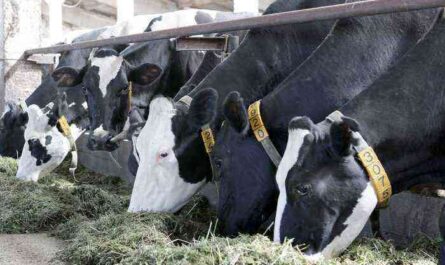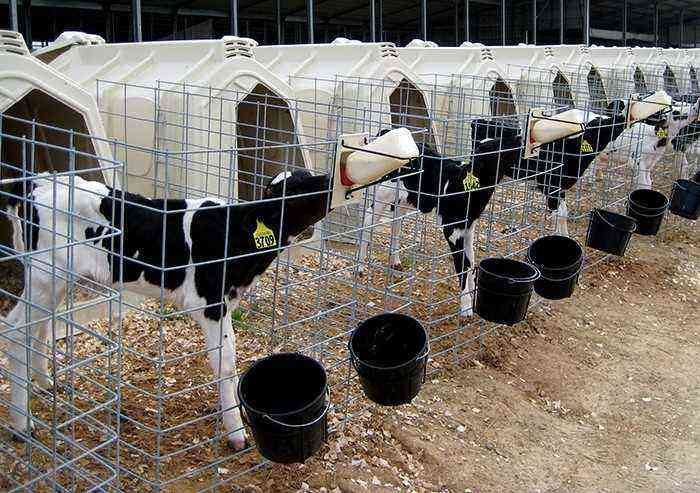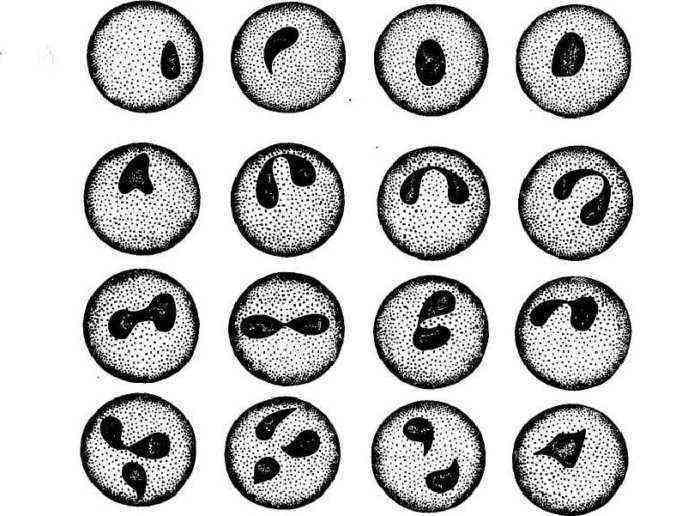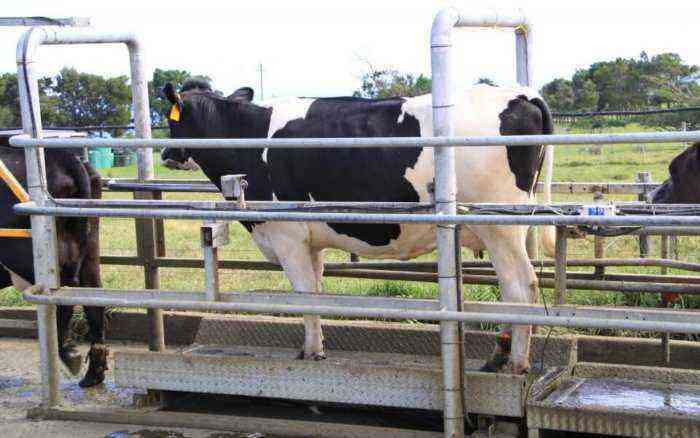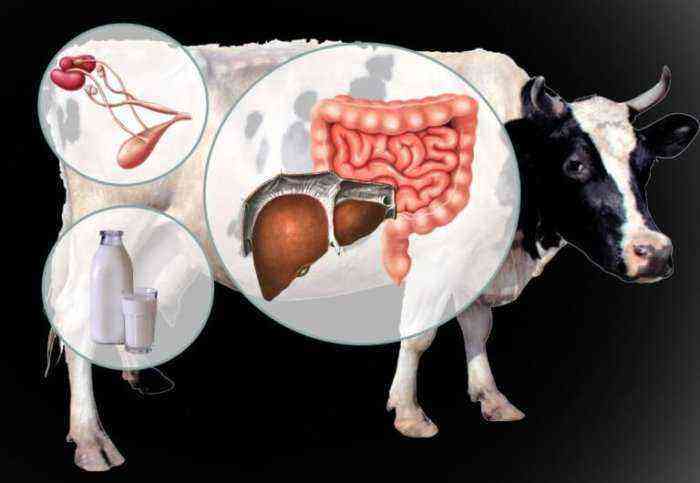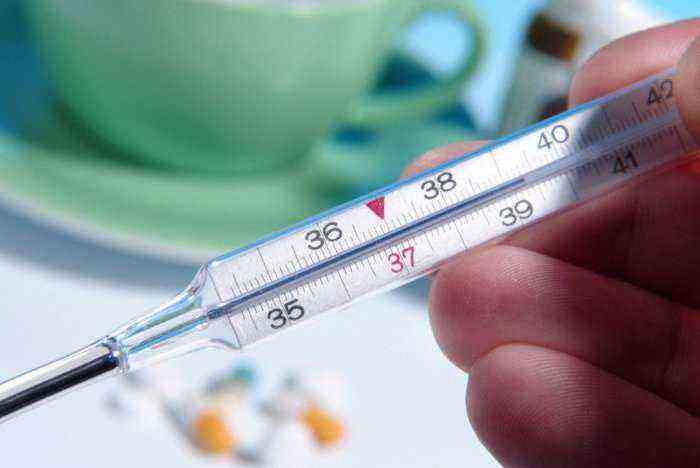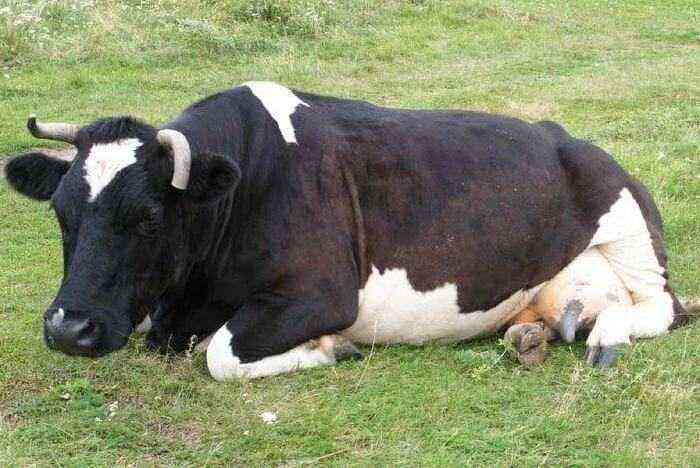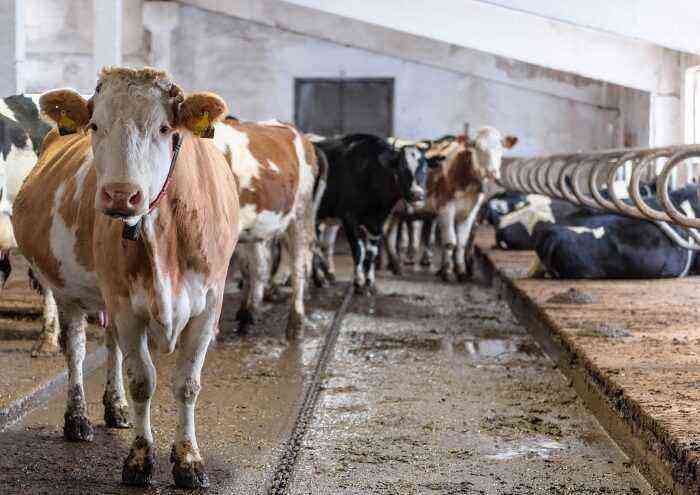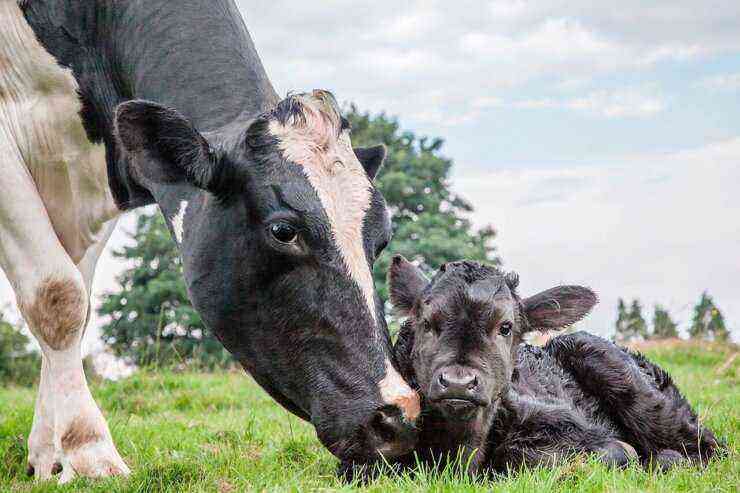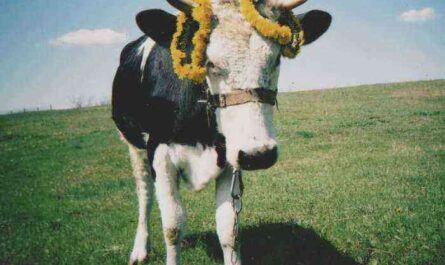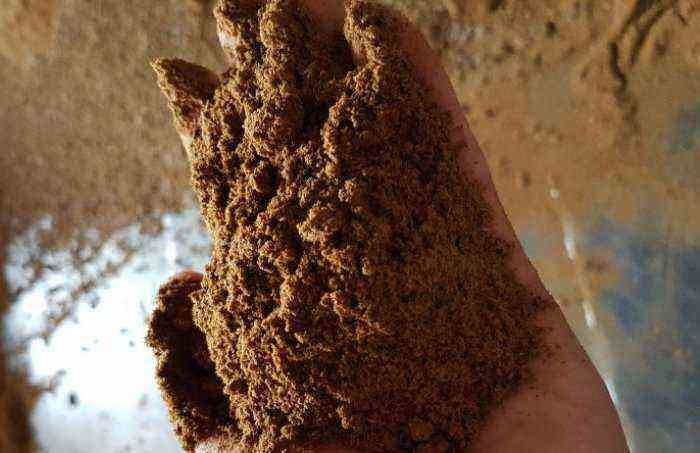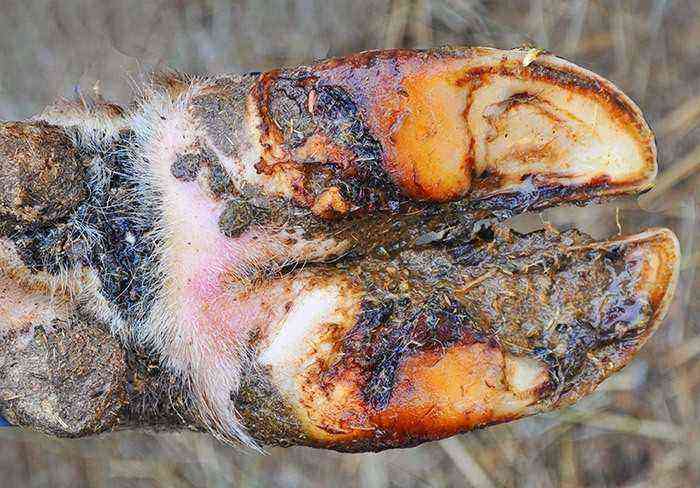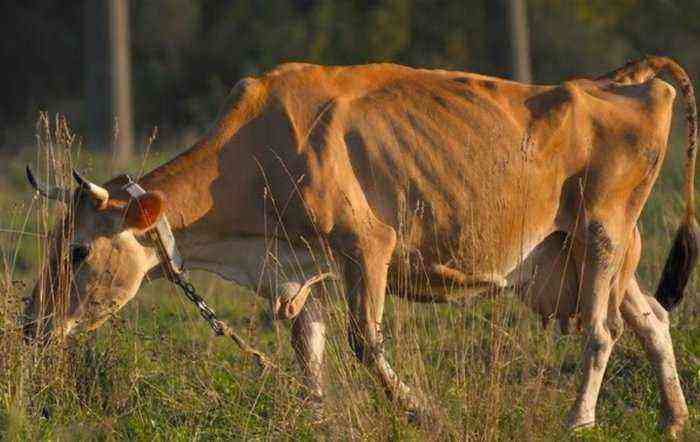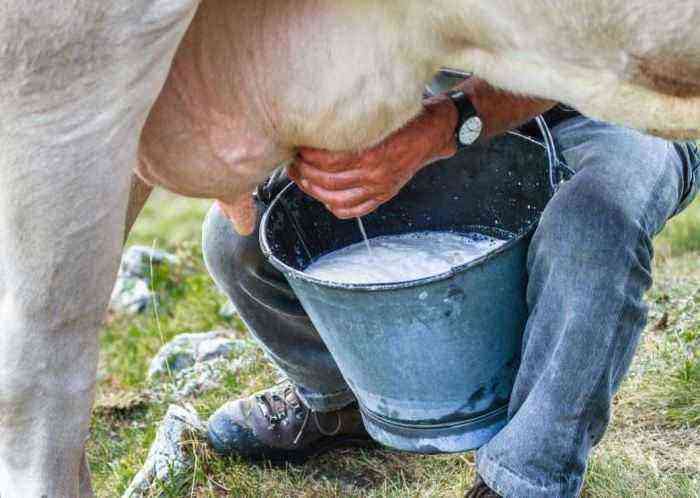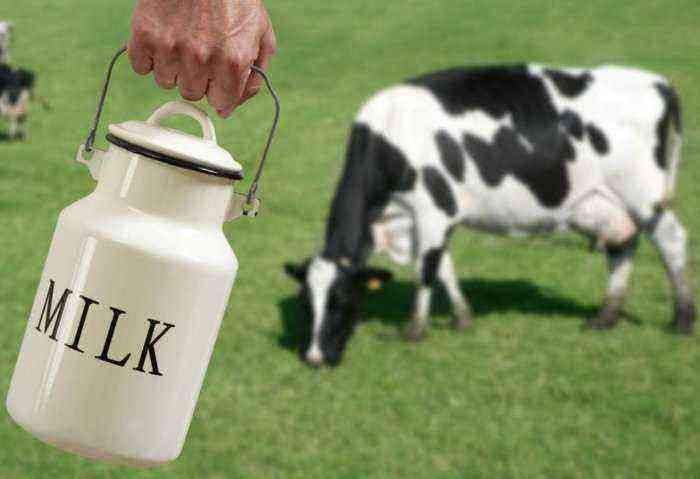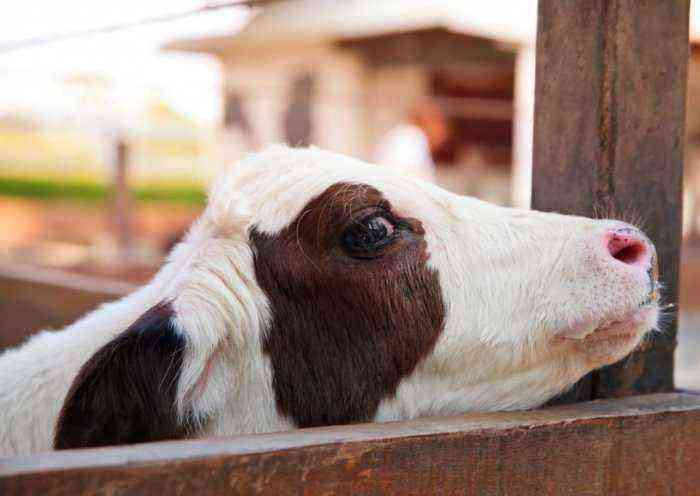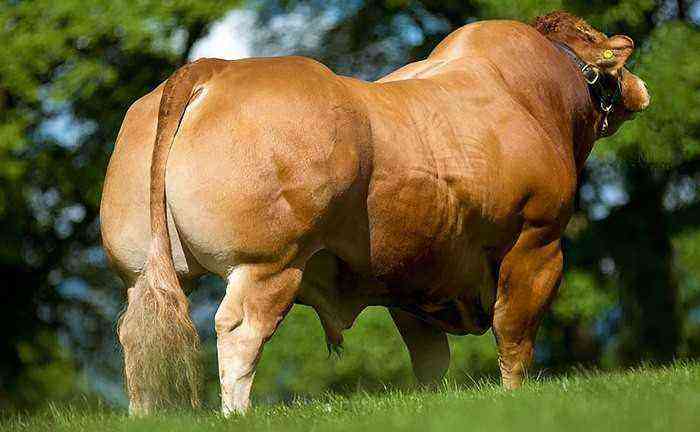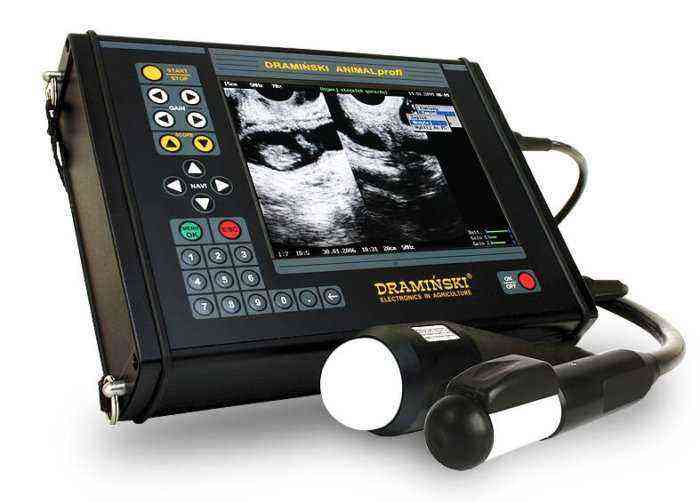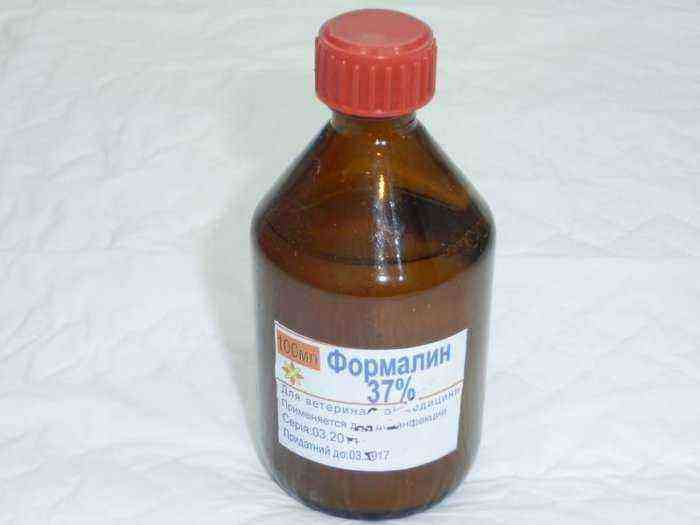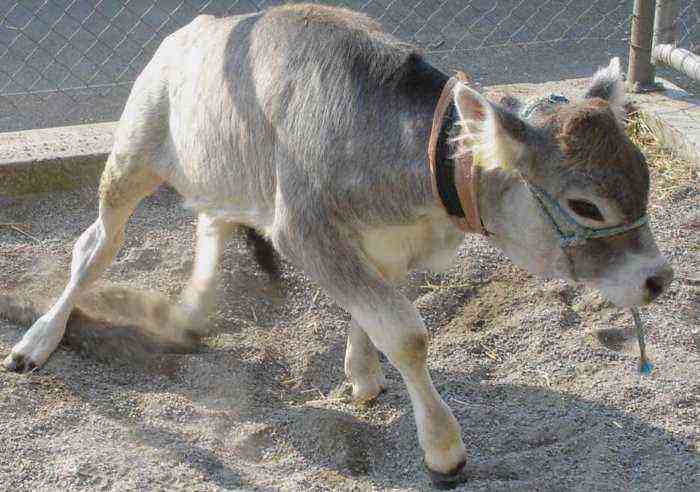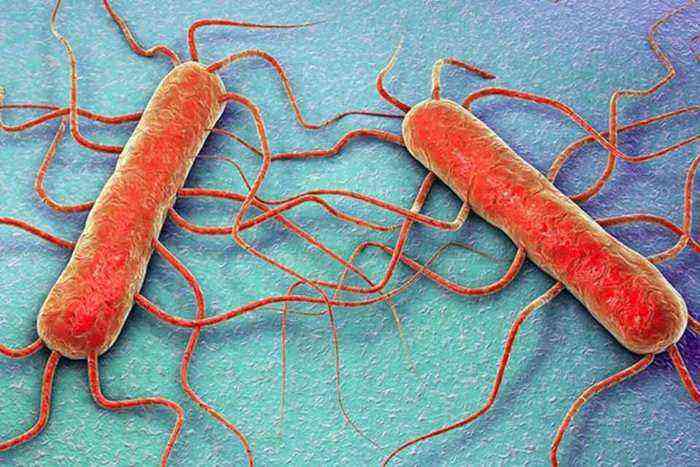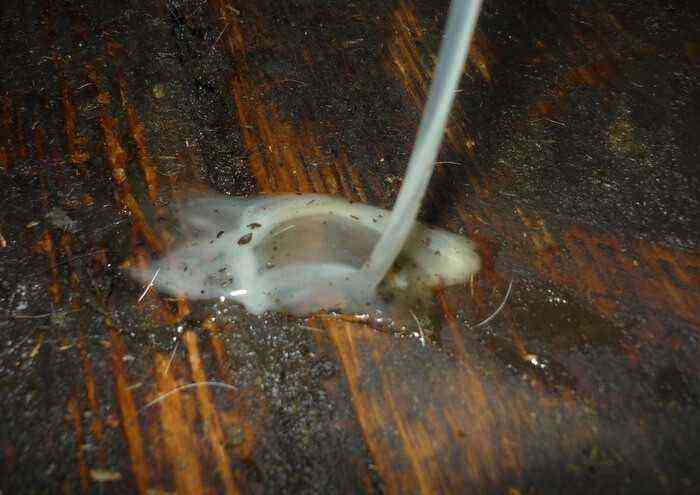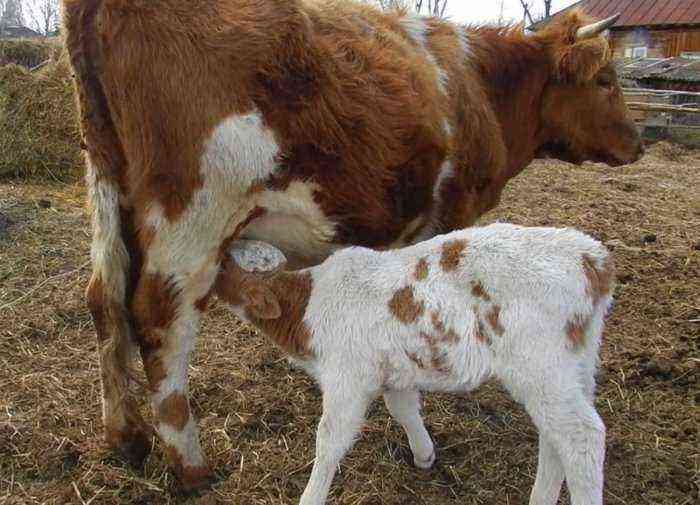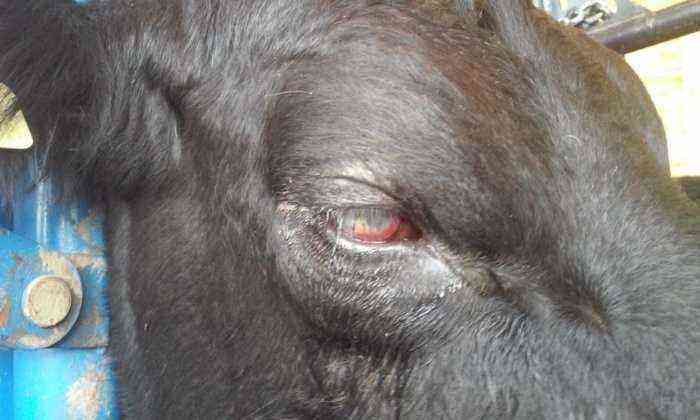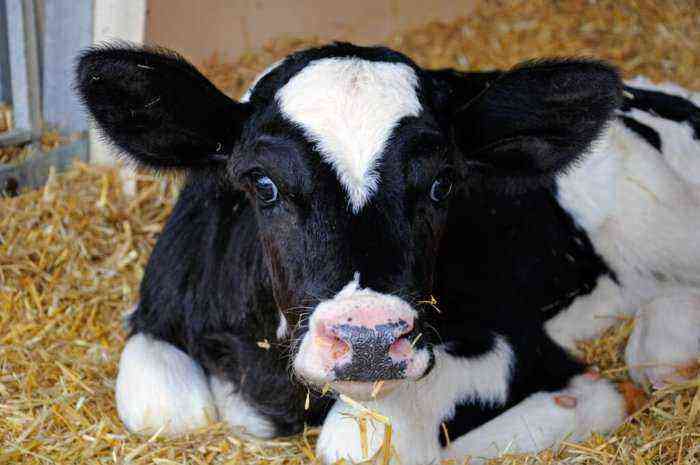Dyspepsia in calves is a serious disorder of the gastrointestinal tract that can lead to malnutrition. This disease can cause significant damage to farms, as it causes a decrease in the productive qualities of livestock and an increase in disposal. Weakened newborn calves with severe malnutrition are most susceptible to dyspepsia.
Dyspepsia in calves
Causes
The main causes of dyspepsia are a violation of the conditions for feeding and keeping young animals. When raising animals on an industrial scale, there may be malfunctions in the operation of equipment that maintains the microclimate in barns, supplies food and clean water. Also, the problem may be the purchase of low-quality feed.
Dyspepsia in newborn calves can be triggered by:
- shortening of the colostrum period;
- delayed colostrum drinking after calving;
- premature introduction of concentrated feed into the diet;
- treatment of lactating cows with antibiotics.
Another alleged reason is autoimmune processes, due to which the digestive system is disturbed in the body. Toxic dyspepsia in calves interferes with the full absorption of colostrum and, as a result, leads to a decrease in body weight and involvement of other body systems in the pathological process.
Forms of the disease
Dyspepsia can occur in mild and severe form, which is determined by the age of the animal, the conditions of its feeding and maintenance. In the normal form of the disease, calves do not experience acute processes and systemic changes in the body, while the toxic severe form can be fatal due to severe damage.
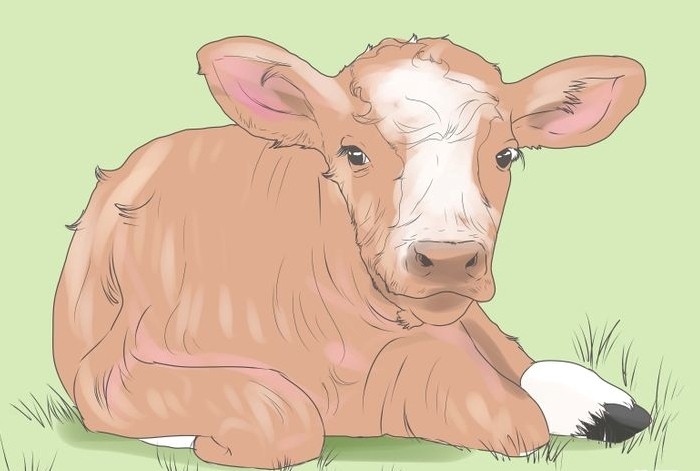
Dyspepsia can be mild or severe
Signs and symptoms
The main symptom of all forms of dyspepsia is persistent severe diarrhea, which has a fetid odor. As a result, the animal has all the symptoms of dehydration:
- Depressed state, sluggish reaction to stimuli.
- Dropping eyes.
- Cardiopalmus.
- Dryness and blueness of the mucous membranes.
- Hard breath.
Important! In the absence of timely treatment and severe course of the disease, death occurs within 2-5 days. When recovering, a calf that has had dyspepsia lags behind in terms of weight gain for a long time.
In calves with dyspepsia, ruffled wool, its fragility, gait disturbances, and trembling in the body are also noted. In the severe stage before the onset of death, the animal constantly lies, involuntary constant defecation, uneven breathing, head thrown back and a decrease in local body temperature during palpation of the ears, base of the horns and limbs are noted.
Pathological anatomical studies reveal muscle flabbiness, pale, jelly-like subcutaneous tissue, the absence of epicardial fat, small hemorrhages on the endocardium, and a decrease in the size of the spleen. The gastrointestinal tract has swollen mucous membranes, hemorrhages, redness. Lymph nodes in the omentum of the deceased animal are enlarged, and curdled mass is observed in the abomasum.
Diagnostics
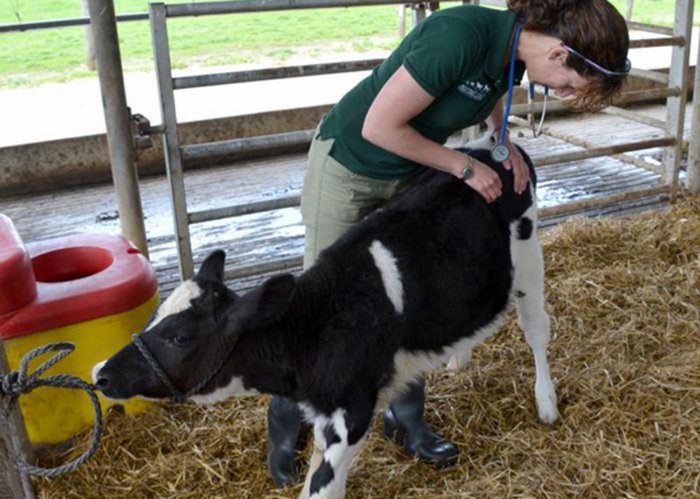
Examination of a sick calf by a veterinarian
The diagnosis of dyspepsia is established on the basis of the symptoms listed above. Animals showing malaise and diarrhea should be examined by a veterinarian. Due to the non-infectious nature of the process, laboratory diagnostic methods are not used.
Treatment and prevention
Treatment for dyspepsia is based on the symptoms present. At the first signs of illness, the calf should be transferred to a separate room where a warm and dry microclimate is maintained. Before this, it is desirable to carry out wet cleaning and disinfection in the barn. Calves are provided with 4 meals a day of colostrum with dissolved vitamin D from clean dishes, as well as constant access to fresh water. A single amount of food should be about 400 ml. Sick individuals are given a decoction of oats, flax or rice. It is cooked in water or milk with the addition of edible salt.
In the process of treatment, you can use herbal decoctions: oak bark or sage, which will help reduce diarrhea and prevent dehydration.
Of the drugs used for dyspepsia:
- antibiotics (strictly prescribed by a veterinarian);
- bacteriostatic drugs (Vitatetrin, chloramphenicol, Terravetin, Oxican, gentomycin sulfate);
- drugs to stimulate the digestive tract (Pepsidil, Pancreatin);
- painkillers (Papaverine, Aminazin, Novocain);
- gastric juice before each feeding;
- preparations for the restoration of microflora (probiotics), which are prescribed after recovery, as well as vitamins A, D, E, C.
As prescribed by a veterinarian for acute dyspepsia, intra-abdominal injections of potassium chloride and sodium are used with the addition of auxiliary components (glucose, novocaine and calcium gluconate). With a mild form, sessions of ultraviolet irradiation and cleansing enemas are prescribed as an additional treatment.
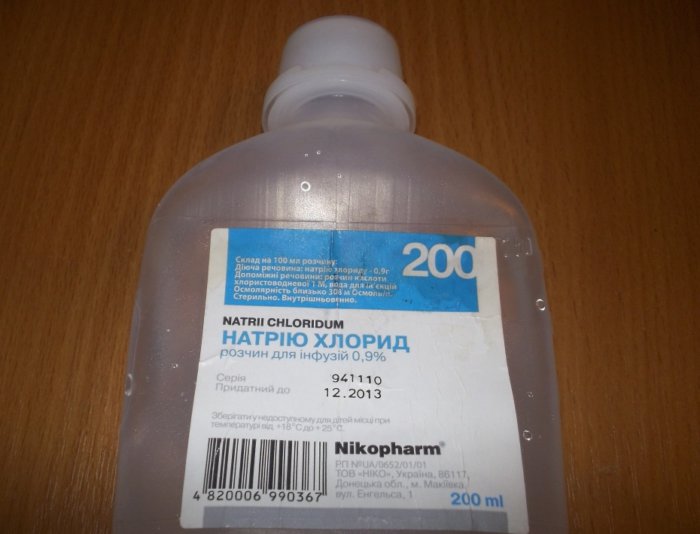
Saline
If dyspepsia was caused by a change in the composition of food, it is necessary to exclude feeding the calf for 12 hours and give saline to drink. Restore nutrition gradually, dividing food into 5-6 meals.
Treatment of dyspepsia can be a long and difficult process, so when breeding cattle, it is necessary to take preventive measures to prevent the onset of the disease. This includes keeping barns clean, providing the livestock with a complete balanced diet according to age, timely vaccination of animals, feeding with vitamin and mineral supplements, and regular pasture walking.
Dyspepsia, even in a mild form, requires attention to newborn calves from the attendants and the veterinarian. Signs of dyspepsia can increase dramatically and lead to serious consequences for the body. Sometimes dyspepsia becomes widespread. In this case, a thorough review of the cultivation technology, as well as the composition of the purchased feed, is required.
